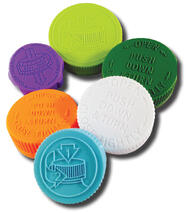An aging population and increased life expectancy are fueling growth in the pharmaceutical industry. In addition, the recently Senate-approved 21st Century Cures Act is expected to greatly expand the number of drugs being produced. In the highly-regulated pharmaceutical industry, it’s important to consider two key factors when designing packaging closures:
- Are they safe for the consumer?
- Is the closure intuitive and easy-to-use?
 When designing these specialized pharmaceutical packaging solutions, you need to select materials and closures that meet both of these factors. If your medicine packaging is unsafe for the
When designing these specialized pharmaceutical packaging solutions, you need to select materials and closures that meet both of these factors. If your medicine packaging is unsafe for the
consumer, it puts non-users in danger of consuming the medicine. But if the closure is difficult to use, especially for senior users, then you are potentially threatening adherence to their medication regimen. Your medicine packaging designs must be secure, but still intuitive and easy to use.
Controlled dispensing liners, such as Mold-Rite’s Accudose liner, provide an adjunct, tamper-evident solution to help control pill dispensing. They can be easily customized to any pill shape. Additionally, they’re easy to use: the consumer simply opens the container then removes the clean pill liner, exposing the controlled dispenser opening.
When dealing with liquid medications, orifice reducers can help control flow. Available in a variety of sizes and apertures to accommodate multiple viscosities, they can be used in conjunction with continuous thread caps or over caps. Liquid orifice reducers offer a cost-effective, innovative and senior-friendly design.
Pharma packaging design requires a complex balance of safety and ease-of-use to accomodate the range of consumers using the product. Watch our video by clicking below to learn more about pharmaceutical closures.
Watch the video by clicking below to learn more about our pharmaceutical packaging solutions.



